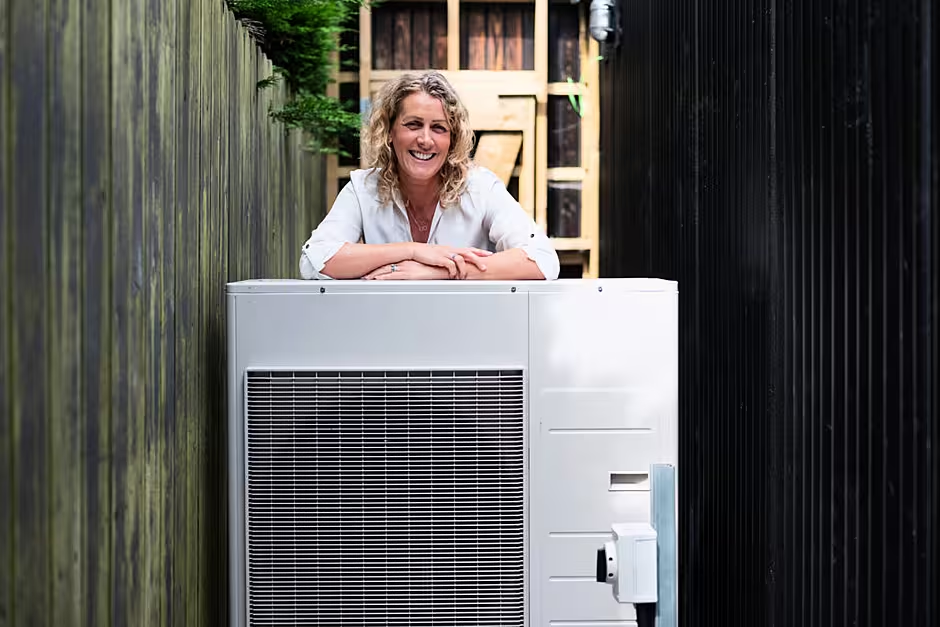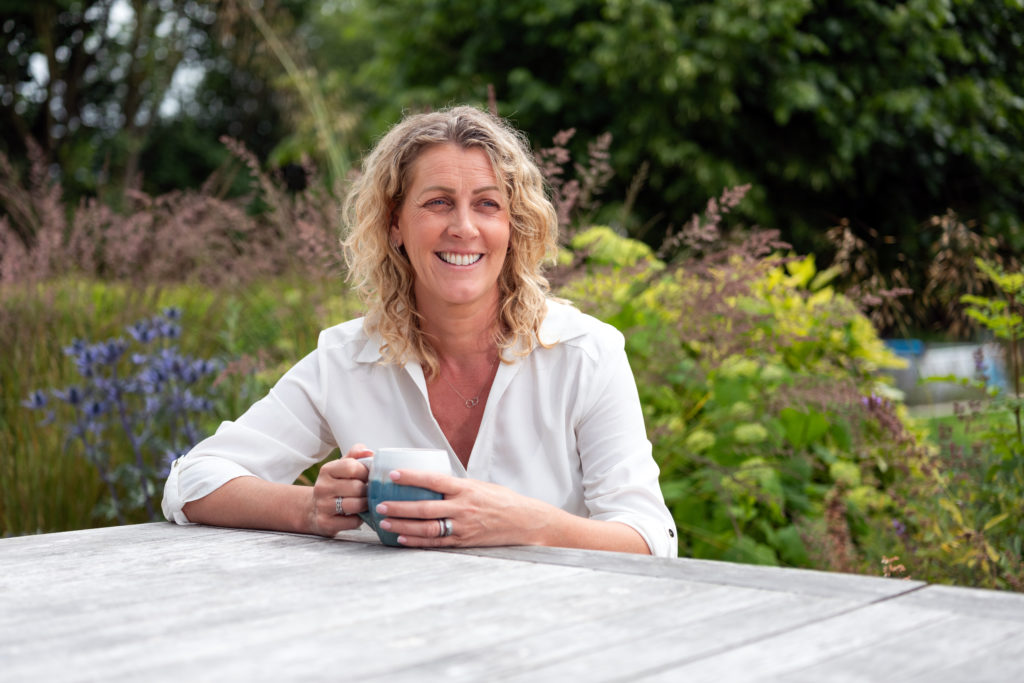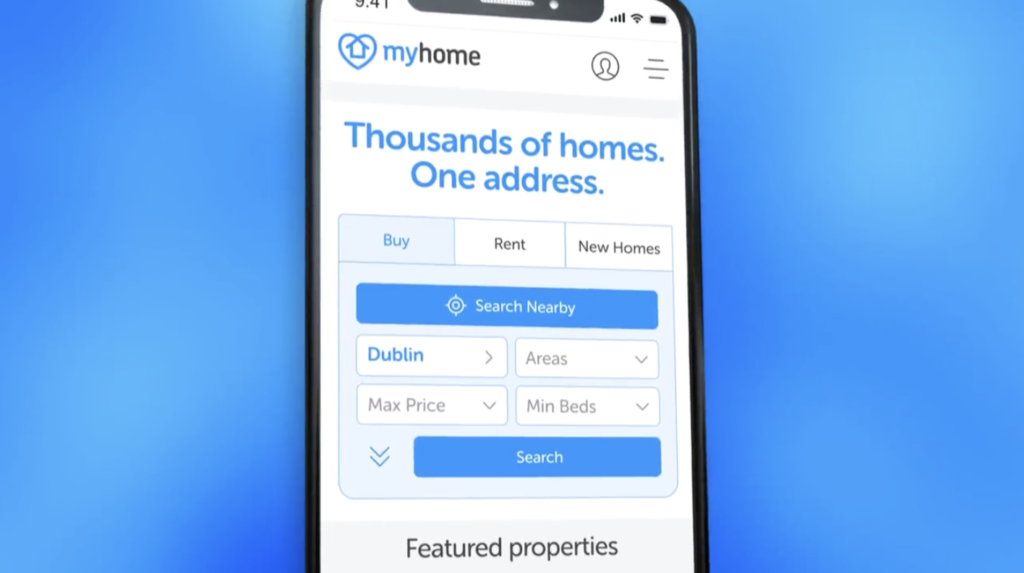To cut energy waste and create a cosier home, it’s time to switch to an energy efficient heat pump, says homeowner Patricia Power who’s done just that in her Co Meath home
Be honest. Did you think you could only install a heat pump as part of a big upgrade to your home? The kind where floors are pulled up for underfloor heating and windows and doors replaced? Has that stopped you from thinking about heat pumps any further?
If so, it’s understandable. So many home improvement stories include heat pumps only as part of big renovation projects which, even with the generous grants available, can still seem daunting.
In fact, if your home was built since modern building regulations came into force in 2007, chances are it is already of a standard that will allow you to benefit from a heat pump.
That’s really good news, and not just because there are heat pump grants of up to €10,500 to help. It’s because it means you too have the chance to maximise the comfort of your home, reduce energy, and save money.

Well, in most cases, we’re waiting for our existing oil or gas boilers to die, says Brian McIntyre, programme manager for high performance building technologies at SEAI, the Sustainable Energy Authority of Ireland.
“Heating is such a fundamental part of our home, so people take time and want to make sure they are doing the right thing. But if your current oil or gas boiler is about 10 years old, it’s time to start thinking about heat pumps,” he says.
If your home was built before 2007, you do need to have a technical assessment, undertaken by an independent assessor, to see if it is already well-enough insulated first to allow a heat pump to function to optimal levels.
“A draughty house will lose heat the way a bucket with lots of holes in it will lose water. Just as you’ve to keep topping the bucket up to keep the water at the same level, with a draughty house you’ve to keep putting heat on and for longer to keep it at the same temperature,” he explains.
Not so for homes built after 2007 which are typically well insulated already.
“There is an assumption too that, to install a heat pump, you must bring your house up to an A Ber rating first, or that it’s only suitable for new builds, but it’s not. There are currently around 250,000 homes on oil or gas boilers that could install a heat pump in straight away,” he points out.
And while underfloor heating is indeed more efficient than radiators, the fact is you don’t need to put it in to benefit from the high efficiency of a heat pump. Indeed, in some cases, you don’t even need new radiators.
Another reason some of us may feel reluctant to consider a heat pump is because we don’t understand the technology, which is ironic, because most of us don’t understand how our gas or oil boilers work either, or even our fridge, which is the closest, in technical terms, to heat pump technology.
“A heat pump is just a source of hot water, the same as your gas or oil boiler is. It produces hot water that goes around your house to heat your radiators,” he explains.
What’s special about them is that they are so much more energy efficient.
With a traditional boiler, for every unit of energy you use to run it, you get just under a unit of heat back. For every unit of energy you use to run a heat pump, you get three units of heat back. “It’s massively more efficient,” he says.
They also maintain a constant level of warmth in your home, so you have a much more comfortable and healthier living environment, without the variation in temperature that you get from an oil or gas boiler.
“With a heat pump the temperature inside remains the same. People will often say they’re not sure what the temperature is like outside, “he adds.
Another fear is that heat pumps won’t work in cold weather. That’s not true, as their use across Scandinavia attests.
“Heat pumps technology is the most mature form we can use to decarbonise our heating. The electrification of heat brings a host of additional benefits, such as cleaner air and energy security” says McIntyre.
“But the fundamental thing is that they make your home so much more comfortable.”
That’s something Ireland’s best known quantity surveyor, Patricia Power, formerly of TV’s Room to Improve, knows not just from working with clients but from her own home.
The straight-talking professional is renowned for ensuring her clients get the best possible value for money with their home improvements. When it came to upgrading her own home heating system, she recently installed a heat pump.
Patricia bought her 100-year-old house 20 years ago and refurbished it three years later, adding an extension, and putting in top notch insulation “to future-proof it”, she says.
A year ago, she extended again, adding space to accommodate her growing family. “In that space I put in a heat pump with underfloor heating ... The reason I could install the heat pump and attach it to the extension I built 17 years ago is because I had insulated it so well. It’s very important if you are putting one into an existing dwelling that it is well insulated, particularly the walls and ceilings. As a result, I find the heat pump works better. You just set and forget it, for an automatic constant temperature,” she explains.
“The heat pump operates in our daytime living space, so we get maximum value from it and it’s amazing. That part of the house is so cosy and warm, with no heat loss. The temperature is pretty much always the same.”
Even if your house was built since 2007, she recommends all clients start out by getting a technical assessment.
“It gives you the master plan for your house. You can then work out step by step what you want to do. You don’t have to do it all at the one time. A lot of the grants SEAI offers are individual ones, so you can do things in phases over time,” says Power.
Not everyone has the money to do all the work at one time in any case. “I have four young kids in school and that’s where my money needs to go. So what I would say is, have your plan and do it bit by bit. I’ve spent 17 years doing my house – changing, progressing, improving,” says Power.
Her new heat pump is just the latest example of that.
Visit seai.ie to find out more about the benefits of heat pumps and how they work, hear from homeowners who have already made the switch and learn about SEAI grants and registered installers to support your heat pump journey










